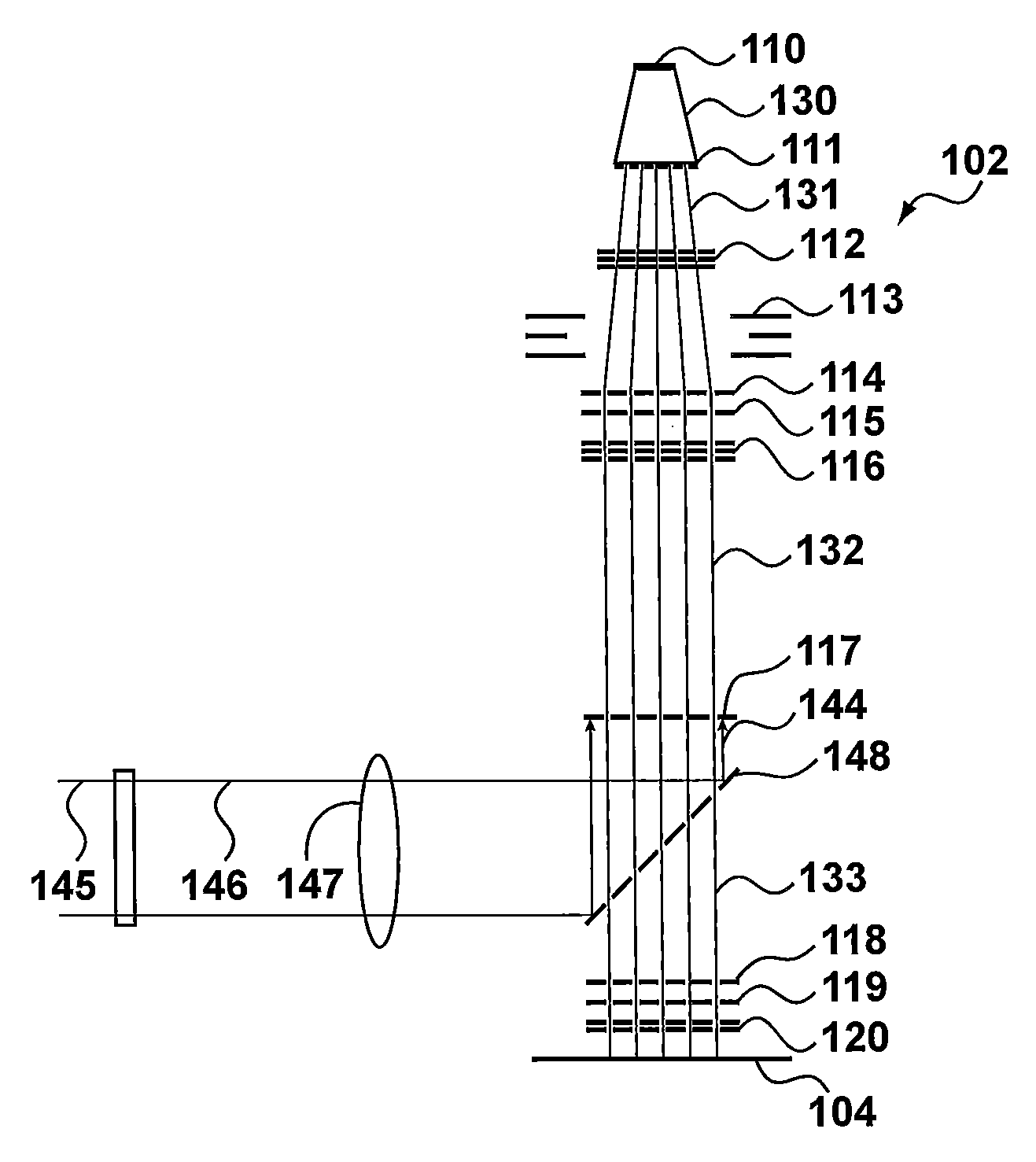Dual pass scanning
a lithography apparatus and chargeless technology, applied in the field of dual-pass scanning, can solve the problem of not being able to generate the first and second beamlet control data at the same time, and the processing of pattern data is not sufficien
- Summary
- Abstract
- Description
- Claims
- Application Information
AI Technical Summary
Benefits of technology
Problems solved by technology
Method used
Image
Examples
example c
[0177 is a combination of interleaving and stacking. For example D the successive interleaved layers are overlapping like a brick wall. Compared to example C, this configuration will provide better averaging between beamlets. At the stripe boundary there are beamlets that would write over the stripe boundaries.
[0178]FIG. 8 shows an example of how the scan lines fill the stripe. The writing strategy determines how the scan lines will be written using the pattern of holes for the beamlets on the beamlet blanker array. One advantage of the “parallel projection” writing strategy is its efficiency. One electron beam is used to make the beamlets. Its efficiency depends on the ratio of the total area of holes (beamlets output current) compared to the area of the group of holes (beam input current). For a relative small number of holes (49), the area of the beam (group of beamlets) must be small for an acceptable efficiency. For “parallel projection” the beam (group) size is smaller that th...
second embodiment
[0325]FIG. 61 shows a second embodiment using in-line rasterization. This is similar to the FIG. 60 embodiment except corrections for beam position calibration, field size adjustment, and / or field position adjustment are made on the vector tool input data. Because these corrections are made on vector data, both full pixel shifts and subpixel shifts in the X and Y direction can be made. These corrections are typically performed in software, and may be performed per wafer. After the corrections have been made, rasterization is performed to generate the PSS format data for input to the pattern streamer.
[0326]FIG. 44 shows inline rasterization functional units assigned to process steps. For this architecture the functional units 3 and 4 (rasterization) are executed inline. For this option input data for the lithography system will be a stripe pattern description in vector format. The rasterization will be done on demand (per wafer, per several wafers, per series of wafers). Changes in g...
PUM
 Login to View More
Login to View More Abstract
Description
Claims
Application Information
 Login to View More
Login to View More - R&D
- Intellectual Property
- Life Sciences
- Materials
- Tech Scout
- Unparalleled Data Quality
- Higher Quality Content
- 60% Fewer Hallucinations
Browse by: Latest US Patents, China's latest patents, Technical Efficacy Thesaurus, Application Domain, Technology Topic, Popular Technical Reports.
© 2025 PatSnap. All rights reserved.Legal|Privacy policy|Modern Slavery Act Transparency Statement|Sitemap|About US| Contact US: help@patsnap.com



